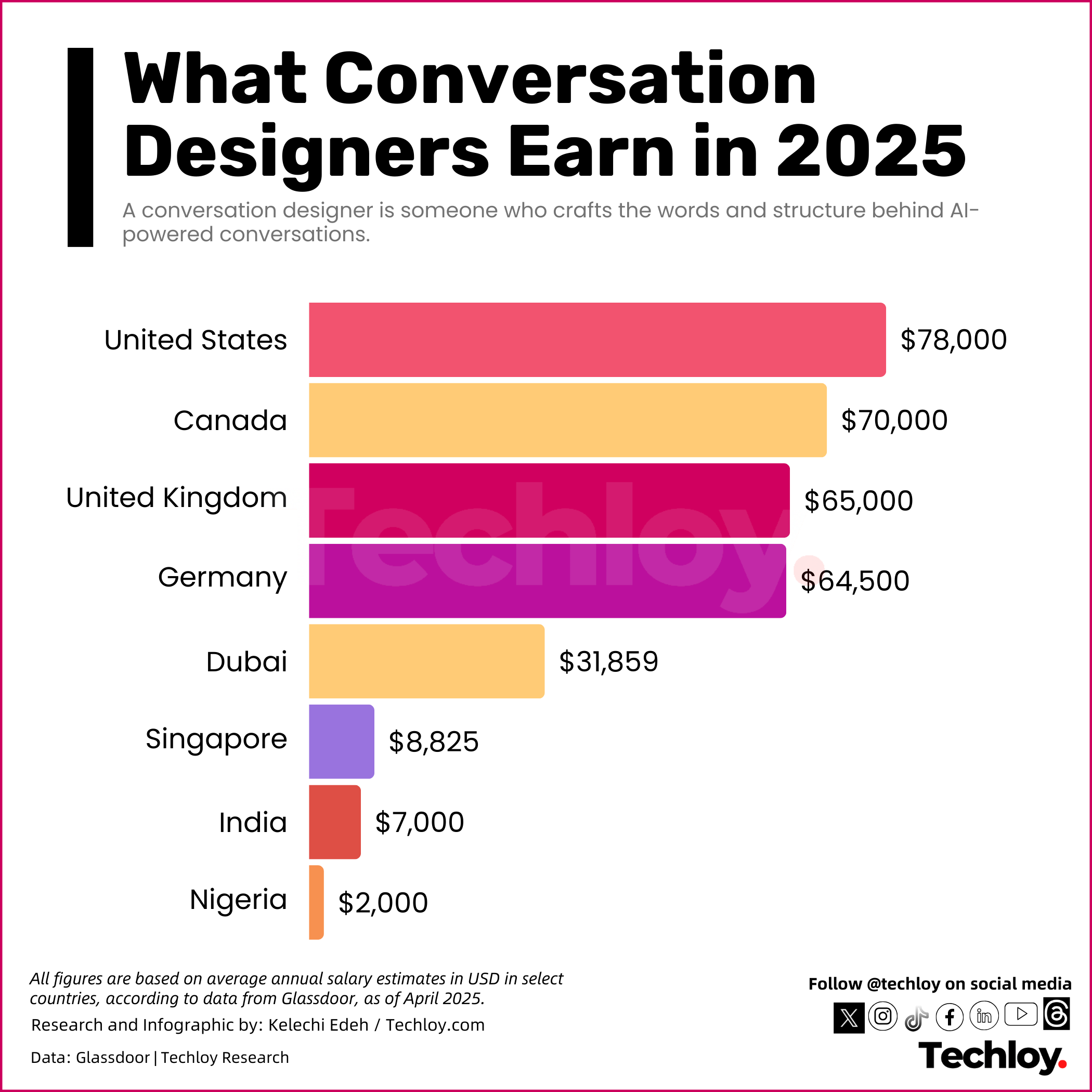The Complete Guide to Becoming a Conversation Designer
Learn how to break into the fast-growing field of conversation design—where creativity, linguistics, and AI come together to shape how we talk to machines.

Once upon a time, chatting with a machine felt robotic, repetitive, and anything but human. Fast forward to today, and you can casually ask Alexa to dim the lights, have ChatGPT write you a poem, or get a chatbot to solve your bank query at 2 AM. None of that happens by accident.
Behind every smart assistant and smooth-talking chatbot is a conversation designer—the person who makes those interactions feel natural, intuitive, and, well, human. And if you're someone who loves puzzles, words, and a sprinkle of AI magic, this might just be the career for you.
So, who is a conversation designer, how much can you earn, and how do you break into the field? Let’s talk.

Who is a Conversation Designer?
A conversation designer is someone who crafts the words and structure behind AI-powered conversations. Think chatbots, voice assistants, and even those fancy smart kiosks at airports. These pros combine UX design, linguistics, psychology, and storytelling to build dialogue flows that feel helpful and human—all while working within the limits of tech like speech recognition and natural language understanding (NLU).
They figure out what a user might say, what the assistant should say back, and how to guide that conversation toward a goal without frustrating the user. It’s less about coding and more about communication—although technical curiosity definitely helps.
How Much Do Conversation Designers Earn?
Salaries vary widely depending on your experience and where you're based. Here's a quick breakdown based on recent data from Glassdoor:
- United States: $58,000 - $107,000/year
- United Kingdom: $53,000 - $77,000/year
- India: $5,850 - $11,700/year (approx. ₹5L - ₹10L)
- Nigeria: $2,080/year (approx. ₦₦3.2M)
Roles in top tech firms or with global clients can pay significantly more, especially with experience in UX, NLP, or AI-driven platforms.

What Does a Conversation Designer Actually Do?
They don't just write chatbot replies. They:
- Research how users talk and what they expect.
- Design flowcharts for conversations (think: if the user says X, the bot replies Y).
- Write clear, brand-aligned copy.
- Test and refine interactions based on user feedback.
- Collaborate with developers, product managers, and UX teams.
They also wear many hats: part writer, part researcher, part designer, and part psychologist.
Skills Needed to Become a Conversation Designer
You don’t need a computer science degree to become a conversation designer, but you do need a specific blend of skills:
Core skills:
- Strong writing and editing chops (especially for short-form, functional copy).
- Understanding of linguistics or natural language processing (NLP).
- UX design principles (flow, feedback, and error handling).
Bonus skills:
- Familiarity with tools like Voiceflow, Dialogflow, Botpress, or ChatGPT.
- Experience with platforms like Alexa, Google Assistant, or custom AI systems.
- Psychology, screenwriting, or even acting (yes, really—it helps with empathy and character).
Roadmap to Becoming a Conversation Designer
Alright, let’s say you’re starting from scratch. Here’s how you could break into the field—whether you’re coming from writing, design, tech, or something totally unrelated.
Step 1: Get curious about how humans talk
Pay attention to the way people ask questions and make requests. Notice how tone and context affect meaning. Read up on basic linguistics and start observing how chatbots and assistants talk to you—what works and what feels off.
Step 2: Learn the tools of the trade
There are free and paid tools to help you start designing. Voiceflow is a great visual tool that doesn’t require coding. Google Dialogflow and Rasa are popular for more technical users. Play around with them and build your own simple bots or voice apps.
Step 3: Take a course or two
While there are no formal degrees in conversation design (yet), there are bootcamps and certifications. The Conversation Design Institute, Google Cloud Skill Boost, and Voxable offer great entry points. Courses from Voiceflow, Coursera, and Udemy can also give you hands-on practice.
Step 4: Build a portfolio
Create a few sample projects. Maybe a banking chatbot, a mental health check-in assistant, or a pizza-ordering voice skill. Document your thinking, your flowcharts, your scripts—and share them online. That’s your proof of work.
Step 5: Network and apply smart
Not all conversation design jobs use that exact title. Look out for roles like "Chatbot Writer," "VUI Designer," or "AI Content Strategist." Follow people in the field, join communities (like Women in Voice), and reach out for coffee chats. It really is a generous and welcoming community.
Conclusion
Conversation design is one of those rare careers where your love for words, empathy, and tech all come together. It’s still a relatively new field, which means there’s room to shape your own path and bring your unique background along for the ride.
You don’t need to be a programmer or have a fancy degree. You just need to care about how humans communicate, be curious enough to learn the tools, and be brave enough to build.
So if you've ever yelled at Siri or laughed at a chatbot’s awkward response, maybe it’s time you got behind the scenes. Who knows? You might just design the next great digital conversation.






